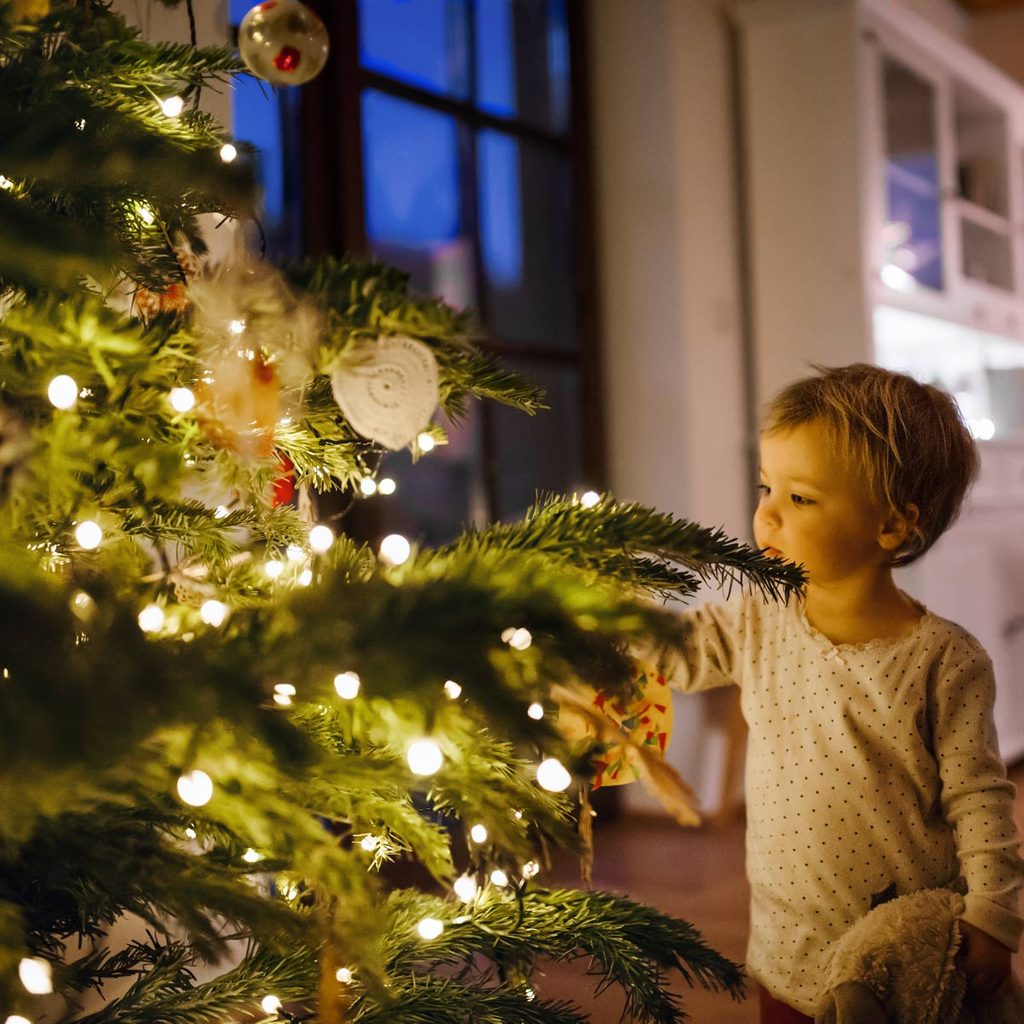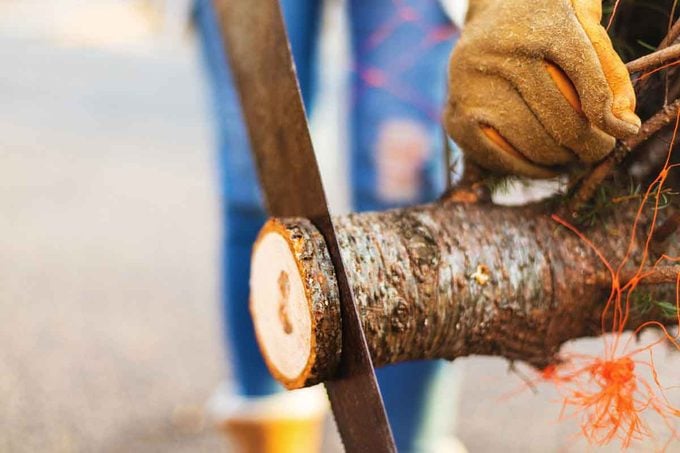How To Keep a Christmas Tree Alive Through the Holidays
Updated: Nov. 09, 2023

If you put your tree up in November, there's always a chance your tree will dry out. Make sure that doesn't happen by following these tips.
On This Page
How To Keep a Christmas Tree Alive at Home
In order to get the most enjoyment for your money, you need to know how to keep your Christmas tree alive once you get it home. The first step is making sure it’s the right height and that it fits your tree stand.
Check the height of the tree before you bring it into the house to make sure it’ll fit under the ceiling. Then, if you have to shorten the trunk, the sawdust will stay outside. Cut an inch or so off the bottom of the trunk. The fresh wood can absorb more water, so the tree will stay fresher longer.
Next, check the trunk diameter by test-fitting the stand. If the tree’s too big, you’ll need to either get a bigger tree stand — or start whittling. Use a tree lopper to trim any bottom branches that don’t clear the sides of the stand.

How To Care For a Christmas Tree
Once you’ve trimmed the tree and set it up inside, use these Christmas tree care tips to keep a Christmas tree alive all season.
Keep the Tree Cold
Your pine tree is used to being in the cold, so it’s certainly not thankful that you have it in a warm and cozy home. Sure it does look beautiful in your living room, but that tree misses being in colder weather. Give your tree some time in the cold by placing it in the garage (but make sure to remove any breakable tree ornaments first). Let it sit there for at least a day or two before bringing it back indoors.
Limit the Weight of Decorations
After bringing the tree back into the garage, try putting fewer ornaments or less heavy Christmas lights into the tree. Yes a tree stuffed with ornaments looks beautiful, but if you want those branches to look lush by Christmas day, don’t put as much weight on them. Especially when it comes to the style of lights you choose. If you have larger light bulbs, the heat can actually burn the surfaces of the tree. The tiny light strands produce less heat. Here are a few tips for decorating a living Christmas tree.
Make Sure it’s on the Right Stand
You want to make sure that your tree is in a traditional reservoir stand that can hold an adequate amount of water. If you want to avoid any water damage to your floors, you could always put a snow saucer underneath the stand, and a rug underneath the saucer. This will catch any excess water without damaging your floors, and it’s easy to cover with your Christmas tree collar or skirt.
How to Water a Christmas Tree
Make sure the tree is in water, and keep it that way! The National Christmas Tree Association says your tree should stand in 1 quart of water per inch of the stem diameter. You could also purchase a particular device, or install a funnel yourself, to make sure that you’re watering your Christmas tree with the correct measurements. Without water, your tree can get brittle and become a massive fire hazard.
What to Feed a Christmas Tree
That’s right—along with giving your tree enough water, you can also feed it with particular substances to keep it alive. Although some people do not feel a Christmas tree needs any type of feed, others have found success in preserving their tree by feeding it. To do so, mix a tablespoon of corn syrup or sugar in the basin of water.
How to Get Rid of a Christmas Tree
Get to know when is the right time to take down a Christmas tree and then here are a few ways you can get rid of a Christmas tree.
- Contact your garbage collection company to see if they will pick up old Christmas trees.
- Check with your local yard waste management department to see if they’ll take the tree.
- Find a tree collecting organization.
Planting a Live Christmas Tree
Planting a ‘live’ Christmas tree is an ambitious task. Its practicality depends on three things:
- the climate you live in
- the size of your Christmas tree budget
- how strong you are
Live trees are sensitive. For a tree to have any chance of survival, it can’t undergo extreme climatic changes. When a tree is brought into a warm home, it will react as if it’s spring and start growing. Once it has entered this growing stage, it will likely die if it suffers through a prolonged freeze when it’s set out after Christmas.
If you live in a moderate climate, a live tree is feasible. When the Christmas season is over, gradually get your tree accustomed to the outdoors by storing it in the garage or three-season porch before planting it. The time for heavy frost must be past before you take it outside. When you finally plant your tree, place it in well-drained soil where it will get full sun.
If you live in a cold climate, a live tree really isn’t practical. You’d need to leave it outside on a screen porch or deck the entire time so it would stay more or less dormant. And you probably don’t want your Christmas ornaments outside.
Live trees are expensive. Expect to pay two to three times more than you would when buying a cut Christmas tree. Usually these trees are potted. If your tree is balled and burlapped, you’ll have to buy a heavy-duty pot to act as both stand and container.
Finally, live trees are heavy. If you want a typical-sized Christmas tree, say a six-footer, together the pot, soil and tree will weigh 250 lbs. or more. Add a little water and moving it will be about as much fun as hefting a piano.